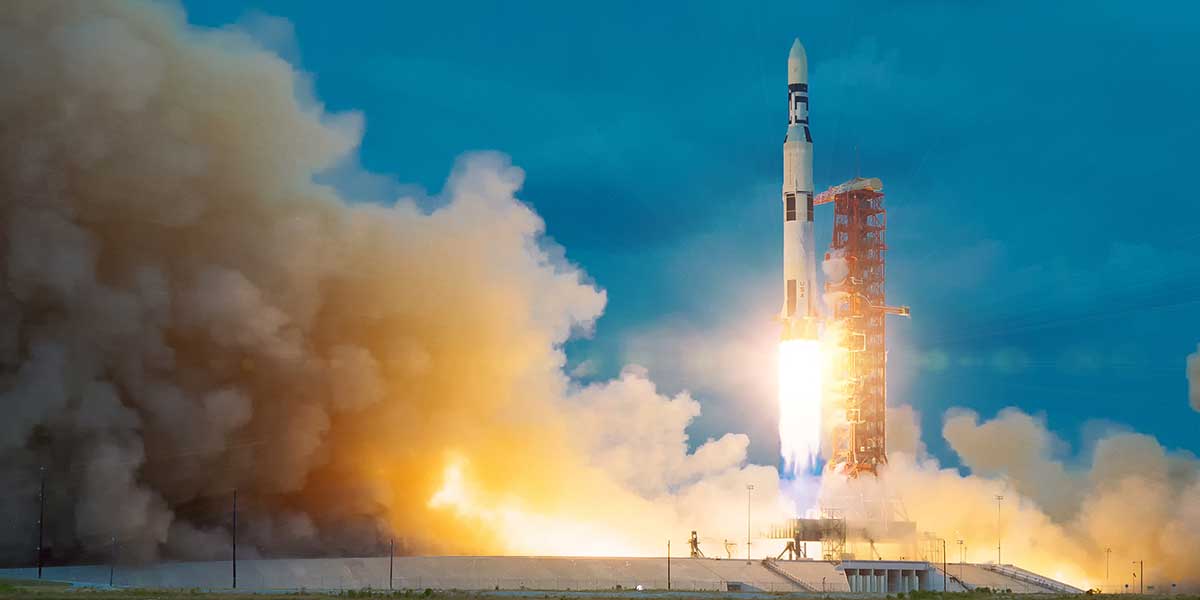AWS Public Sector Blog
Tag: aerospace
How public sector organizations use AWS to build sustainability solutions
The cloud offers transformative solutions to address sustainability challenges, enabling organizations to increase productivity, efficiency, and cost savings, as well as reduce emissions and waste. The cloud also enables data analytics and research at scale, allowing us to better understand and track key climate metrics required for fighting climate change. From smart devices that track water and energy consumption, to machine learning and artificial intelligence to support sustainable farming, organizations across the globe are using AWS to meet their sustainability goals.
AWS joins the Digital IF Interoperability (DIFI) Consortium
AWS helps customers build satellites, conduct space and launch operations, and leverage cloud-powered infrastructure on the ground. To further promote scalability and flexibility across the space industry, AWS has joined the Digital IF Interoperability (DIFI) Consortium. The DIFI Consortium is an independent group of space companies, organizations, and government agencies from around the world that promote an open and simple standard to facilitate interoperability of ground systems supporting space operations.
AWS announces the 10 startups selected for the 2022 AWS Space Accelerator
AWS is pleased to officially announce the selection of the 10 participants for the 2022 AWS Space Accelerator. The selected startups each have an inspiring and innovative vision for how to transform the growing global space industry across a diverse set of mission areas, including Earth observation (EO), space situational awareness, launch and propulsion, and space exploration.
Virtualizing the satellite ground segment with AWS
As the number of spacecraft and spacecraft missions accelerates, moving aerospace and satellite operations to the cloud via digital transformation — including virtualizing the ground segment — is key for economic viability. In this blog post, we explain the benefits of virtualizing the ground segment in the cloud and present the core components of a reference architecture that uses AWS to support several stages of a comprehensive ground segment virtualization. Then, working from this model, we present additional reference architectures for virtualizing the ground segment that can accommodate various requirements and usage scenarios.
Bangalore International Airport Limited, AWS, and Intel announce new Joint Innovation Center
Bangalore International Airport Limited (BIAL), operator of Kempegowda International Airport, Bengaluru (BLR Airport), announced it will establish a Joint Innovation Center (JIC) with AWS and Intel to drive the development and adoption of digital solutions in aviation. This is the first JIC dedicated to advancing the aviation industry.
How students help modernize rocket launches at the Western Range with the AWS Cloud
Vandenberg Space Force Base (VSFB), also known as the Western Launch and Test Range, is one of only two U.S. Space Force launch ranges. A safe rocket launch relies on the ability of Western Range meteorologists to gather and analyze weather data in real-time. The Western Range team wanted to switch to an agile, cloud-based solution that would streamline data analysis and keep operators safe—which prompted them to call on students and AWS Cloud experts at the California Polytechnic State University (Cal Poly) Digital Transformation Hub (DxHub), powered by AWS, to help VSFB prototype a solution.
How to deliver performant GIS desktop applications with Amazon AppStream 2.0
Geospatial datasets are increasingly large, reaching terabyte and even petabyte scale, which can cause many challenges for geospatial analysts and educators–but Amazon AppStream 2.0 can provide some solutions. In this blog post, we walk through how to deploy QGIS, a no cost, open-source geospatial information system (GIS) application used by geospatial analysts, in Amazon AppStream 2.0. We also load an example dataset to demonstrate how desktop GIS application users can access large, cloud-hosted geospatial datasets with high performance by keeping the data and compute components together on the cloud, and streaming the desktop application instead of downloading the data itself.
Amazon and AWS to reimagine space station operations and logistics for Orbital Reef
How will humans explore, experiment, and sustain long-term habitation in low Earth orbit (LEO)? Orbital Reef is the next generation space station currently in development to provide commercial and research space activities in LEO, as well as space tourism capabilities. Amazon Distribution and Fulfillment Solutions (Amazon) and AWS are helping Orbital Reef reimagine networking, logistics, and communications that will be an integral part of the next space station.
AWS announces 2022 AWS Space Accelerator for startups in space technology
The AWS Space Accelerator is a four-week technical, business, and mentorship opportunity open to space startups from around the globe. Now in its second year, the AWS Space Accelerator is designed to support innovative startups from around the world looking to power their space missions using AWS. The application period opens today, with proposals due by April 15, 2022.
What you missed at the public sector leadership session at re:Invent 2021
At the 10th anniversary of re:Invent, Max Peterson, vice president of worldwide public sector at Amazon Web Services (AWS) took to the stage to highlight AWS customers’ innovative advancements to empower communities and transform the future of research, as well as new cloud-powered paths to space exploration and the impact this has on our lives here on Earth. He was joined by customers who shared their stories of how they’re leveraging the cloud to drive their missions. Plus, Max announced a series of new initiatives for public sector customers.









